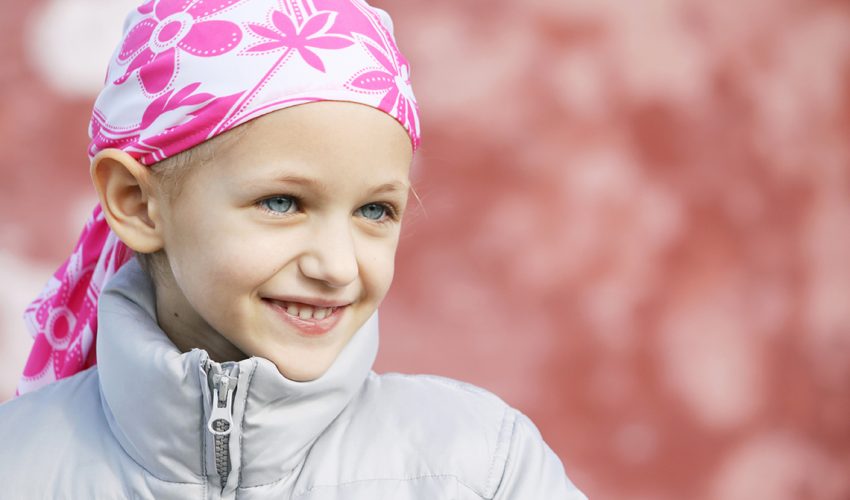Post Views: 1,718
Views No Comments
As many people may already know, the month of September is regarded as “Childhood Cancer Awareness Month”. This reminds each and every individual to join the fight against cancer, specifically childhood cancer. It’s important to understand that there is not much time to sit and wait. Every two minutes, a child is being diagnosed with cancer, which means almost 25,000 kids around the world will be diagnosed with cancer in this month alone. This number is huge! While it’s true that the five-year survival rate for childhood cancers has increased to 80% now, still around 2,000 kids under the age of 19 die every year. This makes cancer the top killer of children by disease.
So, it’s time to act. In 2016, more than 300,000 new cancer cases were reported. This shocking statistic should be taken as a catalyst to act against cancer.
Why is Childhood Cancer a Problem?
Childhood cancer is found to be a big problem today because children’s cancers cannot be treated just like adult cancers. Still, several cases are under federal-funded research. The treatments that are currently provided are found to be toxic. Thus, a kid receiving a cancer treatment would be affected in terms of growth and development. This situation warrants the world to create specialized cancer treatments solely tailored for kids.
Above all, the causes of childhood cancer are not largely known. This put forward another problem because the causes are to be studied in order to understand what treatments would work best. Finally, several American childhood cancer survivors are found to be suffering from lifelong damage to the organs, as well as mental health. This demands the researchers study how treatments would affect the kids long-term so as to prevent the after effects.
Types of Childhood Cancers
The different types of childhood cancers are as follows:
Brain & Neural Tumors
These are the cancers that affect the brain or the nervous system. The common sub-types are:
Brain Tumors: These are the tumors that develop inside the skull. This is the most common of childhood cancer in the U.S. The treatment for this type of cancer would generally depend on the location of the tumor and the type of cancer.
Neuroblastoma: This is the type of cancer that develops in the nerve tissue of the child. Sometimes, this cancer could start growing even before the child is born. The treatment includes surgery, chemotherapy, radiotherapy, immunotherapy, stem cell transplantation, or a combination of these.
Retinoblastoma: This is the type of cancer that develops in the retina of the eye. This type is commonly seen in children of 6 years and below. The treatment of this cancer would involve cryotherapy along with laser therapy, as well as chemotherapy.
Leukemia
Leukemia is the type of cancer that affects the red blood cells, white blood cells, and/or platelets. The common types of leukemia seen in children are:
Acute lymphoblastic leukemia: This is the fast-growing type of cancer that develops when the child’s bone marrow makes several immature lymphocytes.
Acute myeloid leukemia: This is a type of cancer in which bone marrow produces a number of abnormal blood cells.
Juvenile myelomonocytic leukemia: This again is similar to lymphoblastic leukemia but, in this, the bone marrow stem cells would become two different types of white blood cells. Some of these will not become mature.
Chronic myelogenous leukemia: Here, too many bone marrow stem cells would become granulocytes and some of these will not become mature.
As such, the treatment of childhood leukemia would depend on the type of illness and is tailored to each affected child. Often times, it would involve chemotherapy, radiation, and bone/marrow transplantation.
Lymphoma
This is the third most commonly seen type of cancer in children. As the name suggests, this represents cancer that affects the part of the immune system of the child. There are two sub-types in this, which are as follows:
Hodgkin Lymphoma: In this type of cancer, a certain type of cell called “Reed-Sternberg cell” will start to produce abnormally. Treatment for this would involve chemo, radiation, targeted therapies, surgery, or combination of all.
Non-Hodgkin Lymphoma: They are three types in this, which are, lymphoblastic lymphoma, mature B-cell lymphoma, and large cell lymphoma. It has been observed that the non-Hodgkin’s lymphoma in the children of 14 years and below.
Sarcomas
These are the cancers that develop in the soft tissues and the bones. The common types of sarcomas are:
Osteosarcoma: This is the type of cancer that starts in the osteoblasts (bone cell). This is the most common type that occurs in teenagers.
Ewing sarcoma: This is the type of tumor that occurs in bone or soft tissues. This is commonly found in young adults and teenagers.
Rhabdomyosarcoma: This generally starts in the muscles that are attached to the bones and is the common type of sarcoma in children.
Non-rhabdomyosarcoma: This is cancer that occurs in the connective tissues, peripheral nervous system, smooth muscles, and vascular tissues.
Other Cancers in Children:
One should not stop by knowing the types and the seriousness of the childhood cancer. It’s everyone’s duty to help find cures for the children with cancer. Above all, it’s more important to create awareness about it. By creating awareness, more children can be protected from these deadly cancers. So, understand the responsibility and raise against the children cancers.
As many people may already know, the month of September is regarded as “Childhood Cancer Awareness Month”. Keep reading to learn more.

